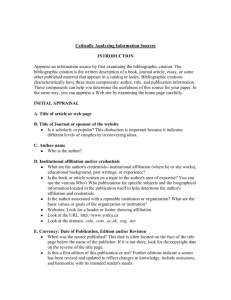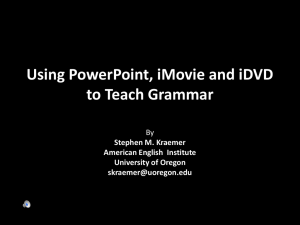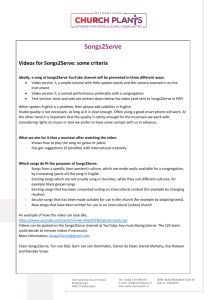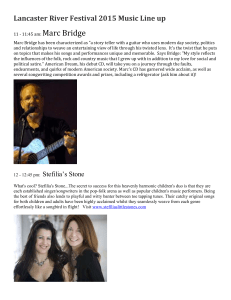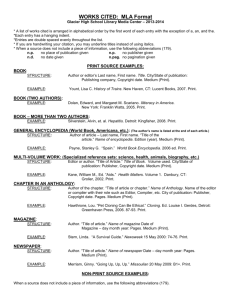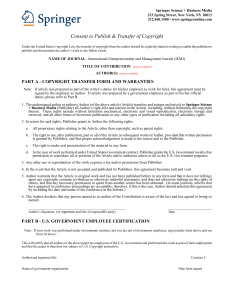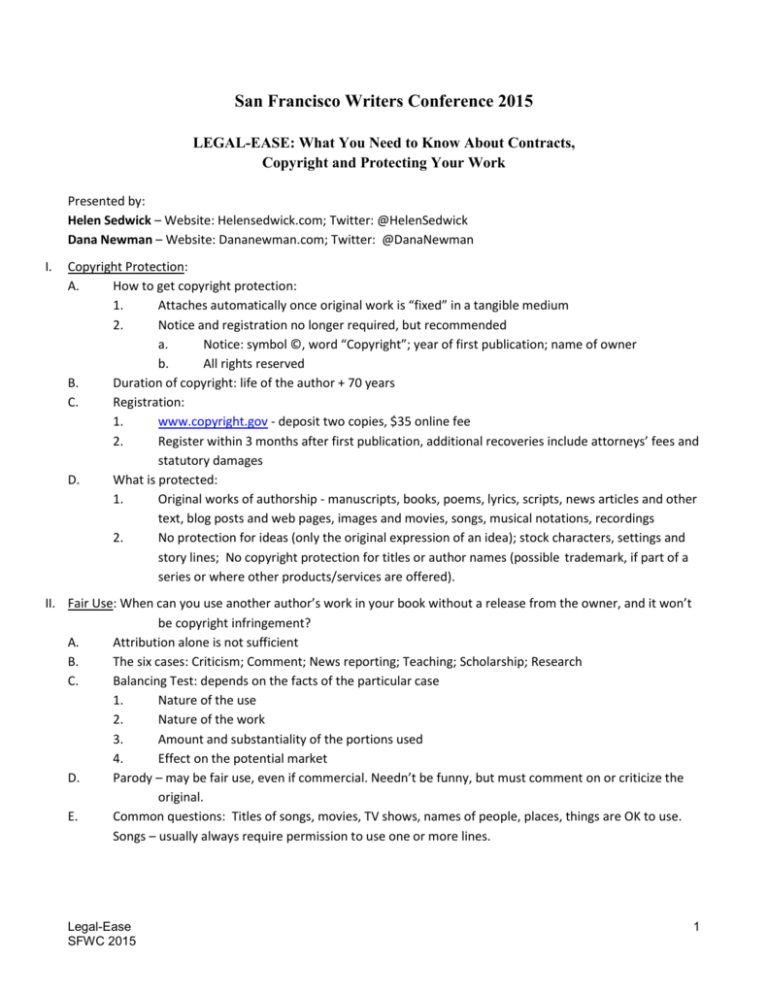
San Francisco Writers Conference 2015
LEGAL-EASE: What You Need to Know About Contracts,
Copyright and Protecting Your Work
Presented by:
Helen Sedwick – Website: Helensedwick.com; Twitter: @HelenSedwick
Dana Newman – Website: Dananewman.com; Twitter: @DanaNewman
I.
Copyright Protection:
A.
How to get copyright protection:
1.
Attaches automatically once original work is “fixed” in a tangible medium
2.
Notice and registration no longer required, but recommended
a.
Notice: symbol ©, word “Copyright”; year of first publication; name of owner
b.
All rights reserved
B.
Duration of copyright: life of the author + 70 years
C.
Registration:
1.
www.copyright.gov - deposit two copies, $35 online fee
2.
Register within 3 months after first publication, additional recoveries include attorneys’ fees and
statutory damages
D.
What is protected:
1.
Original works of authorship - manuscripts, books, poems, lyrics, scripts, news articles and other
text, blog posts and web pages, images and movies, songs, musical notations, recordings
2.
No protection for ideas (only the original expression of an idea); stock characters, settings and
story lines; No copyright protection for titles or author names (possible trademark, if part of a
series or where other products/services are offered).
II. Fair Use: When can you use another author’s work in your book without a release from the owner, and it won’t
be copyright infringement?
A.
Attribution alone is not sufficient
B.
The six cases: Criticism; Comment; News reporting; Teaching; Scholarship; Research
C.
Balancing Test: depends on the facts of the particular case
1.
Nature of the use
2.
Nature of the work
3.
Amount and substantiality of the portions used
4.
Effect on the potential market
D.
Parody – may be fair use, even if commercial. Needn’t be funny, but must comment on or criticize the
original.
E.
Common questions: Titles of songs, movies, TV shows, names of people, places, things are OK to use.
Songs – usually always require permission to use one or more lines.
Legal-Ease
SFWC 2015
1
III. Permissions: for work not in the public domain or fair use, you must make a reasonable effort to contact the
legal owner of the work
*NOTE: Acknowledging the source does not substitute for getting permission
A.
Where to look:
1.
Publisher
2.
U.S. Copyright Office, WorldCat.org
3.
Licensing Organizations:
• Publications: Copyright Clearance Center www.copyright.com
• Photos: Getty Images www.gettyimages.com, Corbis Images www.corbisimages.com
B.
Special issues: multi-media works; co-authors/ghostwriters
IV. Contract Basics:
A.
Traditional Publishing Agreements:
1.
License of Work: which rights (uses) are granted, in what territories, for how long?
2.
Definition of electronic works
3.
Compensation: advance, royalties, e-book royalties, list price or net, MFN clause
4.
Out of Print Clauses: impact of e-books/POD. Tie to sales minimum.
5.
Non-Compete Clauses – reasonable term, limit to same or similar work, exception for some %
for professional use
6.
Option Clauses – same genre, option to negotiate, term runs from delivery (not publication)
7.
Accounting and Audit Rights
B.
Self-Publishing Contract Issues:
1.
License (grant of rights) should be non-exclusive, limited in format (print, ebook, audio, etc.),
and easy to terminate on short notice
2.
Author should control pricing, design, distribution, and all other aspects of book
3.
Websites should provide royalty calculator, formula for calculating price of author copies, and
copy of contract – full transparency!
4.
Check reputation on:
Predators and Editors: http://pred-ed.com/
Writers Beware: http://accrispin.blogspot.co.uk/
Independent Publisher’s Magazine: http://www.independentpublisher.com/
Independent Publishing Magazine: http://www.theindependentpublishingmagazine.com/
Absolute Write Water Cooler: http://www.absolutewrite.com/forums/
Legal-Ease
SFWC 2015
2




